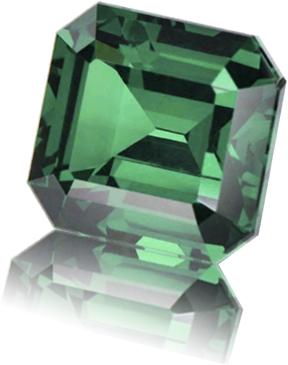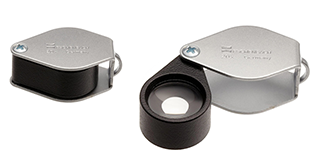

We are currently closed. We will be Re-opening Last Week of November.

Antony is a graduate in business from the University of Bath in England. He is also a full Graduate Gemologist (GG) from the GIA. He graduated from the GIA's Carlsbad. California campus in 1998 and has been working with colored gemstones ever since. He has a wealth of experience in the field and is very involved with the rough buying and cutting of our finest gems.
He is currently serving as the ICA Ambassador to Kenya for the International Colored Gemstone Association (New York) and is also on the Board of the Kenya Chamber of Mines.
Antony will take personal charge of any orders you might make and will personally inspect and approve your purchased gems before shipping.
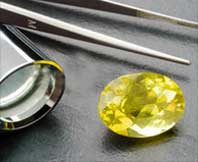

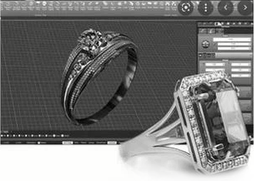







Some of the world's finest and rarest Rubies are now mined in Africa. The traditional sources in Asia have been depleted and there's a new kid on the block. This article delves into the fascinating world of African Rubies, where and how they are mined.



 USA : 1 888 281 3678
USA : 1 888 281 3678 Canada : 1 888 281 3678
Canada : 1 888 281 3678  United Kingdom : 0800 368 6128
United Kingdom : 0800 368 6128 Australia : 1 800 940 788
Australia : 1 800 940 7889am to 5:30pm Monday to Friday

Direct your questions about shipping, returns,
payments and any other queries
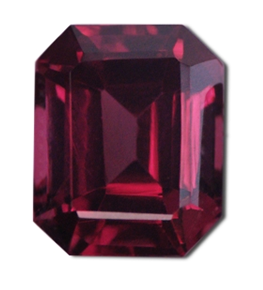
Member's Special Offers are only available to members of theraregemstonecompany.com. When we get a great deal oin a piece of rough or a better yield than expected when cutting rough we pass that saving on to our members via a specia offer. There is only one peice on offer and it is sold on a "First Come First Served" basis so don't hesitate if you want it. You will need the special code emailed to you in order to purchase.
|
Color is the main indicator of value in gemstones. Where as with white diamonds, the less color the more valuable, with colored stones the more vivid pure and bright a color is, the more it is valued. What are we looking for in terms of color? The variations are certainly endless, however a general consensus has been reached that the combination of saturation and intensity in a wide spectrum of hues comprises the top of the gem collectors color pyramid.
Having said that, it is important not to take for granted the lush world of pastels and soft tones that grace our eyes with their gentle caress. Color is certainly a matter of taste. While color remains a subjective "eyes of the beholder" sensation, we assign a rating based on desirability within each gem type. This desirability has its roots in both the trade and in the general marketplace and what is perceived as most desireable in both.
Faceted
Cabochon
Something to remember about gems in general but particularly colored gems is that clean material is very difficult to find. The formation processes of many gems are so extreme that it it crushes the crystals leaving them small and included. Tsavorite is a classic case of this, and it is very hard indeed to find larger clean pieces. It generally takes several hundred million years for most species of colored gem to form and during that time, the pressure and heat must remain constant for the gems to form. The chances of this happening are slim already but the chances of it happening whilst the surrounding environment remains constant too in terms of the rock not folding to a level that damages the growing crystals or the chemical environment altering is even slimmer. So when it does happen and a clean, pure colored gem is formed it is unusual and truly a gift of nature. Hence, most colored gems do contain inclusions and experts are very aware of the rarity of clean material. Thus, given the overall scarcity of gem material, dealers tend to underplay the clarity factor. In contrast with the world of diamonds experienced colored stone dealers will rarely use loupes to a great extent. The focus is far more directed at the color and brilliance of a gem. Nevertheless, clarity does play a role and certainly a very included gem's appearance and brilliance will be negatively affected. It is thus considered an important value factor but it comes in a far second place to color and does not impact the value system of colored gems to the extent it does with Diamonds.
Rarity is one of the key facets of a gem's value. Why for example, is Amethyst cheaper than Tanzanite? Why is Gold valued so highly? Gems fall very much into the demand-supply of market forces and gems that are highly sought after for their enduring beauty and mystery whilst being hard to come by, command a higher price. Hence, rarity is a key area to consider when buying gems and especially when looking to assemble a collection or buying for investment. The grades above reflect a broad market view of the relative rarity of different gems.
Cutting is a very skilled art and the difference between good cutting and bad is the difference between a well proportioned, bright lively gem that shows off the beauty nature bestowed upon it to the greatest degree and a gem that underperforms in this regard.
Move your mouse over the different elements of this certificate to read more information.
The light source used in gem photography can affect the way a gemstone appears. LGL uses the standard light for colored gemstone and Diamond grading which is the North Daylight standard (approximately 6500 kelvin)
Image is not to scale
LGL uses the latest micro laser technology to laser inscribe the certification serial number onto the girdle of each gemstone certified. This is a recognized security feature for Diamonds and colored gemstones in today’s market.
This image is an actual photograph of the laser inscription on this particular gemstone. Photography is done using a microscope camera at 45 x magnification to render the image.
We will address the categories of Gemstone Variety and Species together. All gemstones have a scientific nomenclature allocated to them. Gemologists refer to gemstones using this nomenclature.
A gemstone first belongs to a Species in the gem kingdom, just as different animals and insects do in the animal kingdom, then they have a variety name allocated to them within that species.
For example, Tanzanite belongs to the species Zoisite, Ruby and Sapphire to the Species Corundum, Aquamarine to the species Beryl and so on.
Within each species, each different stone has a variety name allocated to it. So in the examples above, Tanzanite is the blue variety of the species Zoisite, Ruby is the red variety of the species Corundum whilst Sapphire is the blue variety of the species Corundum. Aquamarine is the blue variety of the species Beryl whilst Emerald is the green variety of the species Beryl.
When testing gems, each species has clearly defined physical and chemical characteristics which gemologists can identify using gemological equipment. These clearly and positively identify a particular gemstone as a member of its particular species.
We will address the categories of Gemstone Variety and Species together. All gemstones have a scientific nomenclature allocated to them. Gemologists refer to gemstones using this nomenclature.
A gemstone first belongs to a Species in the gem kingdom, just as different animals and insects do in the animal kingdom, then they have a variety name allocated to them within that species.
For example, Tanzanite belongs to the species Zoisite, Ruby and Sapphire to the Species Corundum, Aquamarine to the species Beryl and so on.
Within each species, each different stone has a variety name allocated to it. So in the examples above, Tanzanite is the blue variety of the species Zoisite, Ruby is the red variety of the species Corundum whilst Sapphire is the blue variety of the species Corundum. Aqumarine is the blue variety of the species Beryl whilst Emerald is the green variety of the species Beryl.
When testing gems, each species has clearly defined physical and chemical characteristics which gemologists can identify using gemological equipment. These clearly and positively identify a particular gemstone as a member of its particular species.
Weight in gems is measured in carat. One carat is equal to 1/5th of a gram and the term is derived from the early days of gem trading when the seeds of the Carab tree were used as counter measures to weigh gems as carab seeds are always uniform in weight. Not to be confused with "karat" which is a ratio and a term used to refer to gold.
The carat weight of a gemstone is one of the 4 C’s and hence an important value indicator in its own right. Generally speaking, the higher the carat weight the rarer the gemstone as it exponentially more difficult to come by clean, top color large gem crystals than it is small ones. That is why, with most gems, you will see an increase in price per carat as the carat weight increases in the same quality bracket. Notable examples are Tsavorite, which is very rarely found in high qualities in sizes above 2 carat, hence per carat prices leap more steeply than with many other colored gemstones.
These are the measurements of a gem usually taken in millimetres. They are stated with length first, width second and depth third. Our gems are measured using a digital guage for extreme accuracy.
This refers to the actual shape or cut of the gemstone. Generally speaking, no one particular shape is considered more valuable than another as gems are cut into the shape that their rough state best dictates in order to retain the most weight in the cutting process. However, occasionally, some sellers will sell more wasteful cuts such as trillions at a premium. We do not subscribe to this practice and all shapes are priced on a par. The exception to the rule is matched pairs. Usually in order to cut a matched pair weight is deliberately lost in order to bring both stones to the same dimensions. This is why matched pairs generally command a 20% premium in the marketplace.
There are 2 basic cutting styles - brilliants and step cuts. Brilliants use a variety of facet arrangements on both the table and pavilion to create brilliance. The classic brilliant use less and larger facets than the more modern cuts which are known as "modified brilliants" which use a larger number of smaller facets to create more internal reflection and brilliance,
Step cuts are more simple cuts utilizing a series of long facets in a series of "steps" on the table and pavilion.
Whether a gemstone is cut as a step cut or a brilliant cut does not affect the quality or value of a stone in any way. The quality of the cut itself in terms of symmetry, angles, dimensions, length to width ratios and balance are responsible for this. The cutting style itself is of no consequence as it purely a matter of personal preference.
All minerals reflect light to a different degree. When light enters a gem from some other medium it normally changes its speed and direction of travel. This is refraction. To express the magnitude of the change gemologists use refractive index which is how many times as fast light travels in air as it does in the gem.
Tanzanite for example has an RI of 1.69 which means light travels 1.69 times faster in air as it does in Tanzanite. The slower light moves through a gem the higher the gem’s RI. The refractive index of a gem is measured by gemologists using a Refractometer and RI liquid and is considered to be the most constant and reliable gem property a gemologist can test.
The refractive index of a gemstone isn’t just an identification signature, it also affects the angles at which it is cut/faceted as it is instrumental in calculating the optimal angles for light reflection within a cut stone.
Crystals will have optical properties that vary with the direction of light. The polarization of light determines the direction of the electric field, and crystals will respond in different ways if this angle is changed. These kinds of crystals have one or two optical axes. If absorption of light varies with the angle relative to the optical axis in a crystal then pleochroism results. Anisotropic crystals have double refraction of light where light of different polarizations is bent different amounts by the crystal, and therefore follows different paths through the crystal. The components of a divided light beam follow different paths within the mineral and travel at different speeds. When the mineral is observed at some angle, light following some combination of paths and polarizations will be present, each of which will have had light of different colors absorbed. At another angle, the light passing through the crystal will be composed of another combination of light paths and polarizations, each with their own color. The light passing through the mineral will therefore have different colors when it is viewed from different angles, making the stone seem to be of different colors.
Tetragonal, Trigonal and Hexagonal minerals can only show two colors and are called Dichroic. Othorhombic, Diclinic and Triclinic crystals can show three and are trichroic. A good example is Tanzanite which can have red, blue or violet appearance when oriented in three different ways in three dimensional space.
Isometric minerals such as garnets, cannot exhibit pleochroism and are Singly Refractive meaning that they have only have single refraction of light.
LGL employs the Gemological Institute of America Colored Stone Grading System. This is generally considered to be the most widely accepted system of grading colored stones and the most advanced.
Color is the main indicator of value in colored gemstones and is the most important of the 4C’s. The GIA has a sophisticated color grading system which is the most advanced and only non subjective system yet developed. The GIA Color Grading system describes color in terms of 3 dimensions — Hue, Tone and Saturation.
HUE is the basic impression of color that we notice immediately. A gem usually has several hues in it and hence it is given a dominant hue and a modifying hue. The vB you see in this example stands for a modifying hue of blue and a dominant hue of violet. Thus the stone is a violetish Blue.
TONE is the lightness of darkness of a color sensation. The GIA divides tone into 11 steps from colorless or white through increasingly darker grays to black. The GIA uses 7 of these steps in grading tone in transparent colored stones.
The optimum range with most gemstones is 4—7 where the stone is neither too light or too dark.
SATURATION is the strength, purity or intensity of the hue. It is assessed on a 7 level scale (0 through 6)
As color can be the most complicated and difficult to understand of the GIA grades, we have developed a set of charts which will help you better understand tones and saturations as they apply to a particular gem type:
Click Here to see the Tanzanite Tone and Saturation Chart
Click Here to see the Tsavorite Tone and Saturation Chart
Click Here to see the Aquamarine Tone and Saturation Chart
Click Here to see the Malaia Garnet Tone and Saturation Chart
Click Here to see the Rhodolite Garnet Tone and Saturation Chart
Click Here to see the Yellow Sapphire Tone and Saturation Chart
These articles in our Article center on Tanzanite color may be useful to those considering Tanzanites.
Gems are graded under 10x magnification. The GIA clarity grades are VVS / VS / SI1 / SI2 / I1-3 / Dcl. Colored stones are not graded by the GIA as flawless or internally flawless, even if they are. This is because a rigid definition of the flawless grade for diamond grading has become established in the trade bolstered by clear FTC guidelines and the vast majority of colored stones simply cannot measure up to these strict definitions for the highest grades of Diamonds. In Type 1, a colored stone that would grade flawless in the diamond sense may sometimes be found perhaps in Aquamarine or Tanzanite but very unusual as virtually any minute inclusion or blemish would disqualify it. Diamonds are graded much more strictly than colored stones as they are harder.
GIA grades are applied to each of the 3 gem types differently (to understand what constitutes a gem type click on the "Clarity Type" category on the certificate.
GIA Clarity Grades as applied to Type 1 Gemstones:
VVS : Characterized by minute inclusions which are difficult to see under 10x and invisible to the unaided eye. Even under a 10x a VVS stone might appear to be flawless. Typical inclusions may be pinpoints, very fine needles.
VS : Characterized by minor inclusions which are somewhat easy to see under 10x but usually invisible to the unaided eye. Typical inclusions might be small included crystals, liquid inclusions, numerous fine needles, small fingerprints
SI1-SI2 – Characterized by noticeable inclusions which are apparent under 10x and in SI1 usually visible and SI2 quite visible to the unaided eye. Inclusions normally have low relief. Typical inclusions may be included crystals, large fingerprints, chips, feathers, dens clouds.
I 1-3 – Characterized by inclusions that have a negative effect on either appearance or durability or both. Inclusions are often large and prominent to the unaided eye and there amy be noticeable loss of transparency.
Dcl – Declasse – Characterized by inclusions so numerous the entire stone is no longer transparent but translucent at best. Dcl stones lack beauty and durability.
GIA Clarity Grades as applied to Type 2 Gemstones:
VVS : Characterized by minor inclusions which are somewhat easy to see under 10x but usually invisible to the unaided eye. Typical inclusions might be small included crystals, liquid inclusions, numerous fine needles, small fingerprints
VS : Characterized by noticeable inclusions of moderate size, which are easy to see under 10x and sometimes visible to the unaided eye. They are still non damaging. Typical inclusions are liquid inclusions, fingerprints small chips, small feathers, clouds.
SI1-SI2 – Characterized by obvious inclusions which are large and/or numerous under 10x and in SI1 apparant and SI2 very apparent to the unaided eye. Typical inclusions may be large included crystals, large chips, feathers, dense clouds.
I 1-3 – Characterized by inclusions that have a negative effect on either appearance or durability or both. Inclusions are often large and prominent to the unaided eye and there amy be noticeable loss of transparency.
Dcl – Declasse – Characterized by inclusions so numerous the entire stone is no longer transparent but translucent at best. Dcl stones lack beauty and durability
GIA Clarity Grades as applied to Type 3 Gemstones:
VVS : Characterized by noticeable inclusions which are easy to see under 10x but usually invisible to the unaided eye. They are still non damaging. Typical inclusions are small included crystals, liquid inclusions, fine needles, small feathers, clouds.
VS : Characterized by obvious inclusions which are very easy to see under 10x but and often visible to the unaided eye. Typical inclusions are small included crystals, liquid inclusions, chips, fine needles, small feathers, clouds.
SI1-SI2 – Characterized by prominent inclusions which are large and numerous under 10x and in SI1 apparant and SI2 very apparent to the unaided eye. Typical inclusions may be easily visible but not extensive feathers and dense clouds.
I 1-3 – Characterized by inclusions that have a negative effect on either appearance or durability or both. Inclusions are often large and prominent to the unaided eye and there amy be noticeable loss of transparency.
Dcl – Declasse – Characterized by inclusions so numerous the entire stone is no longer transparent but translucent at best. Dcl stones lack beauty and durability
This article in our Article Center goes into some depth on Tanzanite clarity:
The GIA grades clarity in transparent, faceted colored stones using a series of definitions which state the typical inclusions and their appearance in each grade. The typical clarity of a given kind of colored stone depends largely on its mode of formation. Different gems can be very different in typical occurrence and they clearly cannot be graded in exactly the same way. The ground rules have to be slightly different. Some colored stones like Aquamarine and Tanzanite are expected to be relatively free of inclusions. Others like Ruby and Tsavorite are acceptable with minor inclusions. And some like emerald, may have numerous inclusions or inclusions very obvious to the unaided eye and still be desireable. To clarity grade emeralds on the same scale as Aquamarines would almost automatically put all Emeralds in the lowest clarity grade. To balance fairness and workability, the GIA divides all transparent colored stones into 3 broad categories or Clarity Types. Each Type is based on the inclusions generally expected to be seen in stones in the market.
TYPE 1 - Stones that are often virtually inclusion free. Include Aquamarine, Tanzanite, Topaz
TYPE 2 – Stones that usually contain inclusions. Include Ruby, Sapphire, All Garnets, Spinel, Tourmaline
TYPE 3 – Stones that are almost always included. Include Emerald, Red Tourmaline
There is a subtly different set of clarity grade definitions for each type
Gem treatment might be defined as any human controlled process that improves the appearance, durability or value of a gem. Treatments can be divided into a few basic categories – temperature, irradiation, chemicals or surface modification. Using high temperature to change the appearance of a gem is known as heat treatment and is one of the oldest and most common treatments dating back to 2000BC. Several gem types are routinely heated in the trade and the treatment is accepted as permanent and stable. For gems such as Tanzanite and Aquamarine, the treatment is applied to virtually 99.9% of all production and is considered normal. In fact, most Tanzanite is mined partially heated in the ground anyway.
See these articles in our Article Center for more in depth information on this :
Gemstone Treatments Heating and Irradiation
This refers to the gem’s origin. In some cases, as with Paraiba Tourmaline, Burmese Ruby, Kashmir Sapphire, the stone’s origin can mean a premium price. Mostly, however, this is not the case and gems are graded, sold and admired on their own merit. Origin is an important category on a gem certificate though as it basically refers to its "place of birth".
Barcode - Each gemstone certified has a unique barcode.
Official Hologram. This is a tamper proof hologram security feature. Attempts to remove it will denature the hologram rendering it useless.
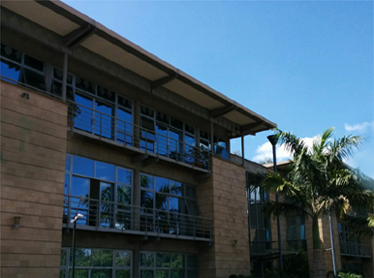

 USA : 1 888 281 3678
USA : 1 888 281 3678 Canada : 1 888 281 3678
Canada : 1 888 281 3678  United Kingdom : 0800 368 6128
United Kingdom : 0800 368 6128 Australia : 1 800 940 788
Australia : 1 800 940 788Direct : +254 20 2641700
Office Hours 9am to 5:30pm Monday to Friday

Direct your questions about shipping, returns,
payments and any other queries
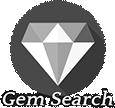
If you can't find what you are looking for in our regular collections,
submit a Special Request and let us cut / source it for you. You will be
notified by email if we find a gem that matches your specs.

Your Product has been successfully added to the cart.
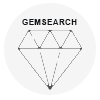
Thank You for submitting a Special Request .
We will notify you by email when we find gems that match your specifications and may interest you.
You can see and manage your special requests in your account by loggin into your account and clicking on the link Special Requests.

MESSAGE SENT
We will respond shortly
ASK A GEMOLOGIST FEATURE
Terms and Conditions of Use
Use of our acclaimed Ask a Gemologist feature which affords you access to certified GIA gemologists is free of charge. However, you agree to the following tenets when you use the Ask a Gemologist feature:
1. You will be signed up as a member of theraregemstonecompany.com with all the rights and privileges of membership.
2. Questions addressed to the Gemologist panel must be related to our business. Questions unrelated to gemstones or jewelry on our website will not be answered.

FRIEND REFERRAL ADDED SUCCESSFULLY
Our system has opened them a Member's Account and sent them
an introduction email. If they purchase off the site, 6% of the sale
will automatically be credited to you EAG Account Statement

NO ITEMS FOUND WITH THAT ID
Thanks for your email .
We will reply shortly.
